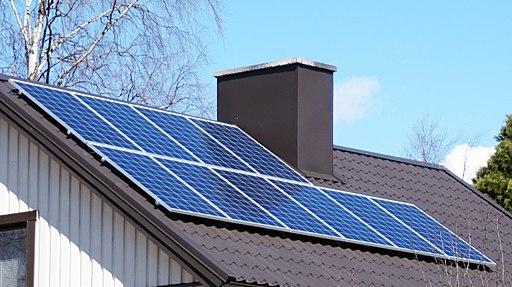Alex Berezow wrote about the decision of the California Energy Commission requiring new home construction to have roof-top solar panels. Beyond the lessons about crony capitalism and solar’s growing addiction to government largess, it does illustrate two economic concepts, first-mover advantage, and externalities.
Being the first-mover
When a new market develops, the first companies to enter the market take on the risk that there will be no demand. But when demand is present, that risk becomes an advantage as they can frame the market’s products and expectations. Any of the I’s tunes, pod or phone are excellent examples of first mover advantage. Electrical companies were the first to provide energy to our homes and had maintained their first-mover advantage for some time. We have invested a great deal in the infrastructure and delivery of electricity. Producing electricity is an expensive proposition, at least initially, creating the networks to store and deliver that product. These systems are “natural” monopolies only 1 or 2 companies could afford the effort, so government regulates them and their charges making them public utilities.
A solar “solution” comes into the market at a disadvantage compared to first-mover utilities. And the government provides them with subsidies to allow them “to compete” against the utilities. But that is not entirely true. After all, the government already regulates energy companies rates. And as I have said before, the government pays no bills, we do. In this instance, we pay additional fees and taxes to subsidize the emerging market for solar energy. Those extra fees are built right into the electric rate, so in some ways, as Alex correctly argues, the poor subsidize the wealthier.
Externalities
In creating a model of costs and benefits, we sometimes leave factor out, because we believe they are not part of the calculation. For example, environmentalists have argued, correctly, that energy production has externalities we have not considered, like emissions. So it is intriguing (?) that the California Energy Commission, ignores an “externality” that changes its calculation of savings with solar.
Their calculations are part of the public record, and they go to great lengths to determine costs and calculated benefits for two sizes of homes and across a range of California’s climates. Their bottom line is that the new regulation will add about $8,300 to construction costs and deliver twice as much in savings over 30 years – net a savings of about $23 a month. But nowhere in their calculation did they consider the cost of the interest on that $8,300 construction cost. Oops. Very few people purchase a home, the median in California is just north of $500,000, in cash; we take a mortgage. The additional interest comes to $34 a month. Counting in the “externality” moves the savings with solar to an $11/month cost.
I guess couching the new regulation as a savings is better than telling new homebuyers that they will be subsidizing solar energy companies.
[1] 30-year mortgage, 30-year fixed mortgage interest rate: 4.41%, without consideration of taxes and insurance, for a 500,000 home is calculated at $2005 a month, adding on the $8,300 for solar panels increases the monthly payment to $2039. The same calculation for a $250,000 home puts the difference at $33/month.



